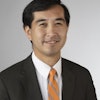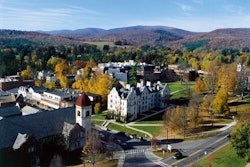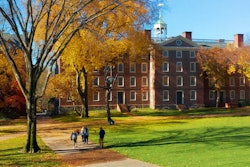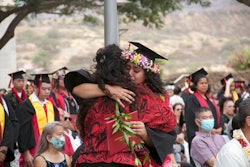WASHINGTON
There is no model minority group, and access to higher education remains as much of a challenge for many Asian Americans as it is for other underrepresented groups, researchers said Monday at a press briefing to release a groundbreaking report.
Portrayed as the “model minority” group, Asian American and Pacific Islander students are praised for their Ivy League educations, fierce STEM field visibility and competitive standardized test scores. But this “model minority” stereotype obscures the reality of the complete Asian American Pacific Islander educational experience.
In a new report “Asian Americans and Pacific Islanders, Fact, Not Fiction: Setting the Record Straight,” the College Board in collaboration with the National Commission on Asian American and Pacific Islander Research in Education (CARE), debunks prevailing myths surrounding Asian Americans and Asian Pacific Islanders.
Supported by well-researched facts, the report concludes that Asian American and Pacific Islander students are not “taking over” higher education, they are not concentrated only in selective four-year universities and they are not a homogenous racial group with uniformity in educational and financial attainment.
Many Aisan American students do excel in high education, particularly in California, where they make up nearly 40 percent of admissions to the University of California’s three flaship schools.
The “model minority” stereotype is detrimental, the report states, noting that in assuming universal academic strength, teachers and counselors often do not extend help to their Asian American and Pacific Islander students.
Deborah Wei, principal of Folk Arts-Cultural Treasures Charter School in Philadelphia, where 65 percent of students are Asian American or Pacific Islander, said the report accurately defines the issues of access and the barriers confronting these students.
“Within this Asian American population are families that speak three dialects of Chinese, Indonesian, Vietnamese, Laos and Korean. The majority of Asian American students come from homes where English is not spoken. Yet, ESL and translation services are far from adequate,” Wei said, noting that the path to higher education begins in elementary school.
It is true that Asian Americans as a group have earned above-average incomes and achieved above-average levels of education, said Rep. David Wu, D-Ore., at the news conference to release the report. But they are clustered at both the high and low ends of the scale.
While middle- and upper-income Asian American and Pacific Islander students often have families with the financial and cultural capital to attend selective private schools, the assumption that all Asian Americans and Pacific Islanders can do this is completely false, the report states.
“That is one story of the Asian American experience,” said Dr. Robert Teranishi, a professor of education in the Steinhardt School of Culture, Education, and Human Development at New York University and co-principal investigator of CARE. “There are other stories. In reality, there is no single Asian American and Pacific Islander composite.”
Some Asian American or Pacific Islander students are from families of the educated elite who immigrated to the United States under preferences for the highly educated; their children typically complete or plan to complete four years or more of higher education, Teranishi asserted.
Immigrants who are not professional elites in their native countries or who come from impoverished rural areas of Asia or the Pacific Islands, often have little to contribute to the finance-driven economy of the United States.
While more than 44 percent of Asian Americans (excluding Pacific Islanders) have earned a bachelor’s degree, 20 percentage points higher than the national average, many have dropped out of the American educational system at various stages.
Among the 24 distinct Asian American ethnic groups reported by the 2000 Census, the range of educational attainment and socioeconomic status is expansive.
A significant percentage of Asian American populations posted low educational attainment. Nearly 60 percent of Hmong Americans have little-to-no high school experience, followed by 53 percent of Cambodian Americans, 49 percent of Laotian Americans and 38 percent of Vietnamese Americans.
“Framing legislation to the address the needs of low-income and low-educational groups has been a difficult task,” said Wu, insisting that many legislators are unaware that there are problems within the Asian American and Pacific Islander community.
“We are not an ethnic group in which everyone went to Harvard,” Wu continued.
Contrary to the predominant perception that Asian Americans and Pacific Islanders are most likely to attend private four-year institutions, far more Asian American or Pacific Islander students attend public two-year and four-year colleges. In fact, most Asian American or Pacific Islander students attend public institutions. In some states like California and Nevada, over half of all Asian American or Pacific Islander college students are attending public community colleges. Enrollment among Asian Americans and Pacific Islanders at community colleges is increasing nearly twice as fast as their enrollment at four-year institutions.
Along with the widely held belief that Asian Americans and Pacific Islanders are only attending highly selective universities, is the idea that as high school students they almost always outperform other racial groups on standardized tests.
Asian Americans as a group substantially outscore other minority groups on the SAT college entrance exam, but they are also present in the bracket of low performers stunted by poor English skills.
Click here to post and read comments
© Copyright 2005 by DiverseEducation.com





















